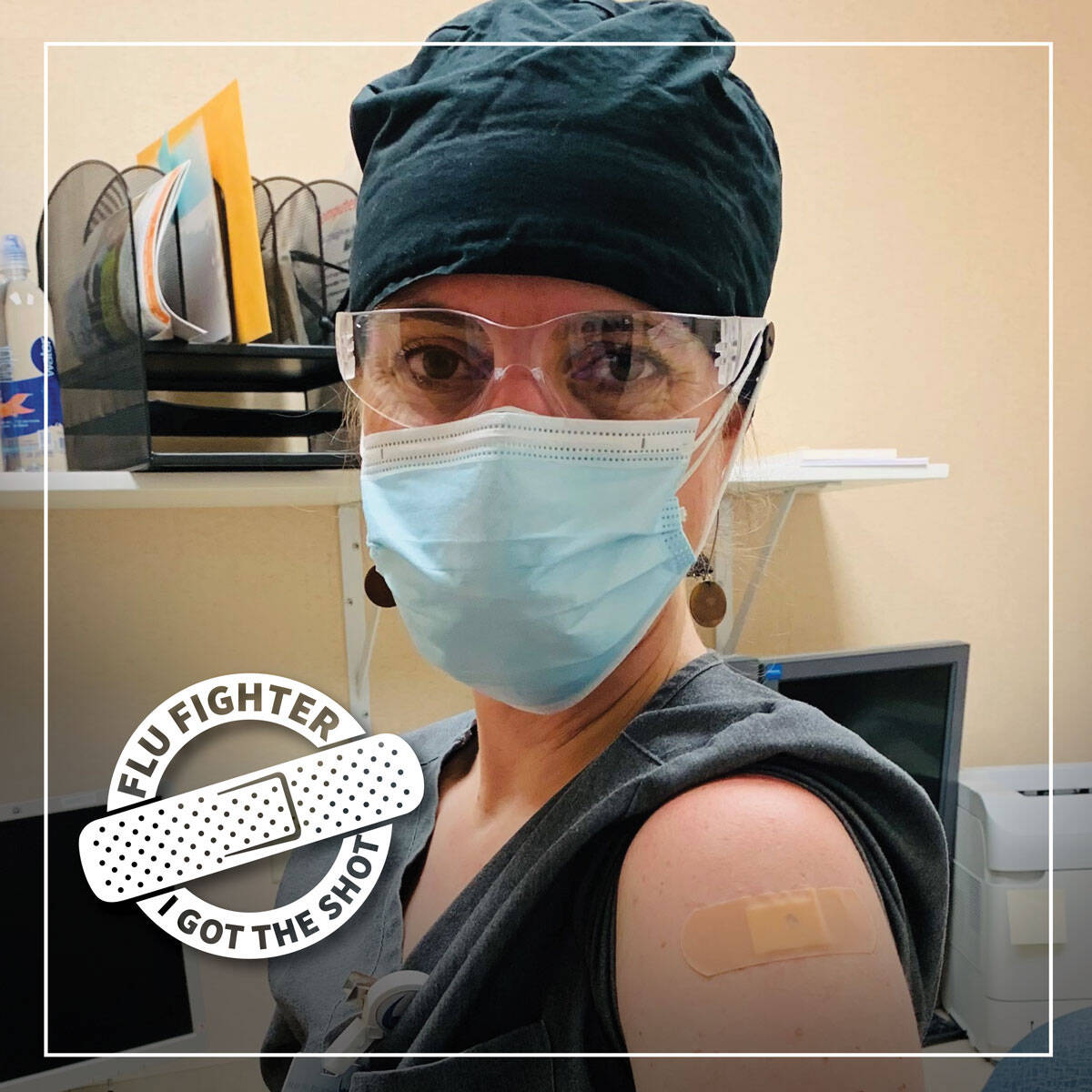By Dr. Anne Zink
This year’s early snowfall was a reminder that winter is on its way. Alaskans are moving fast to put on snow tires and dig out ice scrapers. Cobwebs and goblins are popping up in stores and neighborhoods. October is here. Time to winterize and immunize.
Now is a great time to get your annual flu shot — and your COVID-19 vaccine — if you haven’t done so already. The goal is to protect Alaskans as quickly as possible, to help drive down our COVID-19 cases and prevent the flu before it begins circulating widely in our communities.
Last year, Alaskans did a great job of getting their flu shots before the end of October as recommended. We also did great as a state at wearing masks, keeping social circles small, washing hands often and physical distancing from non-household members to help stop the spread of COVID-19. Alaska, like the rest of the country, experienced historically low levels of flu last year as a result and helped push down COVID-19 case rates.
COVID-19 cases and hospitalizations are again high, and our health care system is stressed. If you want to help protect yourself, your family and Alaska’s health care system, please make an appointment to get a flu shot today — and get vaccinated against COVID-19 too.
The flu is responsible for hundreds of thousands of hospitalizations and tens of thousands of deaths annually in the United States. Although it varies year to year, Alaska is significantly impacted by the flu. Anyone can get the flu, and serious problems can happen at any age. To learn more and to view Alaska flu data, please visit flu.alaska.gov.
The flu shot is safe, significantly reduces your chance of getting the flu and helps prevent serious illness, hospitalization and death associated with flu. There’s a chance you could still get the flu even if you’re protected by the flu vaccine, but if you do, you will likely have a milder illness than if you were unvaccinated. That means missing fewer days of work or school, plus it will help keep you in shape to fight off other diseases too, including COVID-19.
Flu shots can be administered at the same time as other vaccines. If you are considering getting vaccinated for COVID-19 or getting a COVID-19 vaccine booster dose, check to see if your provider or clinic offers both for convenience and efficiency.
We recommend that everyone age six months and older get an annual flu shot. Essential workers with high levels of contact with people outside their house are at higher risk for flu as well as people who live or work in nursing homes and other long-term care facilities. Other people at higher risk of getting severe flu disease if they get the flu include:
Pregnant women and children under 5 years of age
People 50 years and older
Adults and children who have chronic medical conditions like lung disease, asthma, heart disease, diabetes, neurologic disorders, and weakened immune systems, or those who are extremely obese
Alaska Native people and other racial groups who are disproportionately affected by chronic medical conditions that can increase the risk for severe flu or COVID-19
As the weather cools and we return to indoor activities, it’s easier for us to transmit the flu and other viruses to each other. Let’s stay ahead of the game, stay healthy, and take the strain off Alaska’s health care system. This year, when you winterize, don’t forget to immunize.
Get your flu shot this year — and every year — before the end of October. The flu shot is widely available. Contact your health care provider, pharmacy or a state public health center near you to ask about flu vaccine availability. And consider getting a COVID-19 vaccination or booster if you are eligible. For more information visit: flu.alaska.gov and covidvax.alaska.gov.
Dr. Anne Zink, M.D., is a board-certified emergency physician and Alaska’s chief medical officer.

